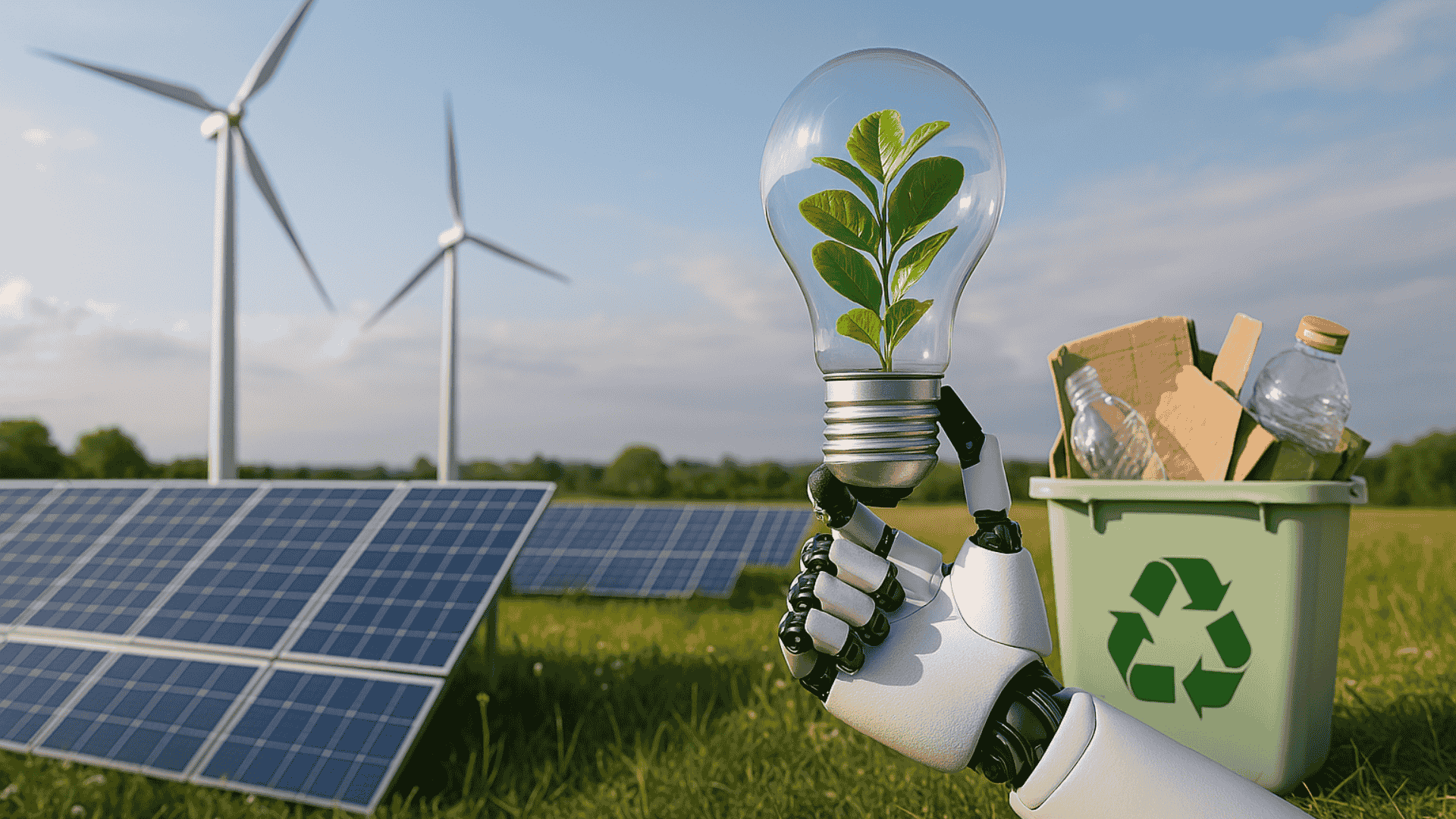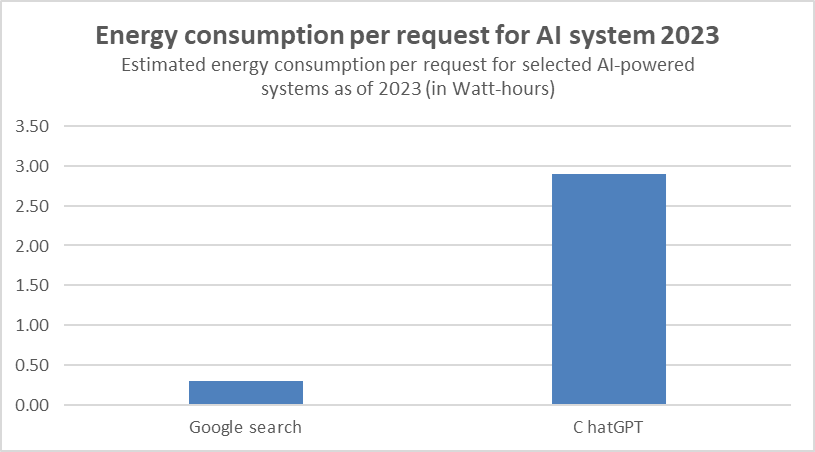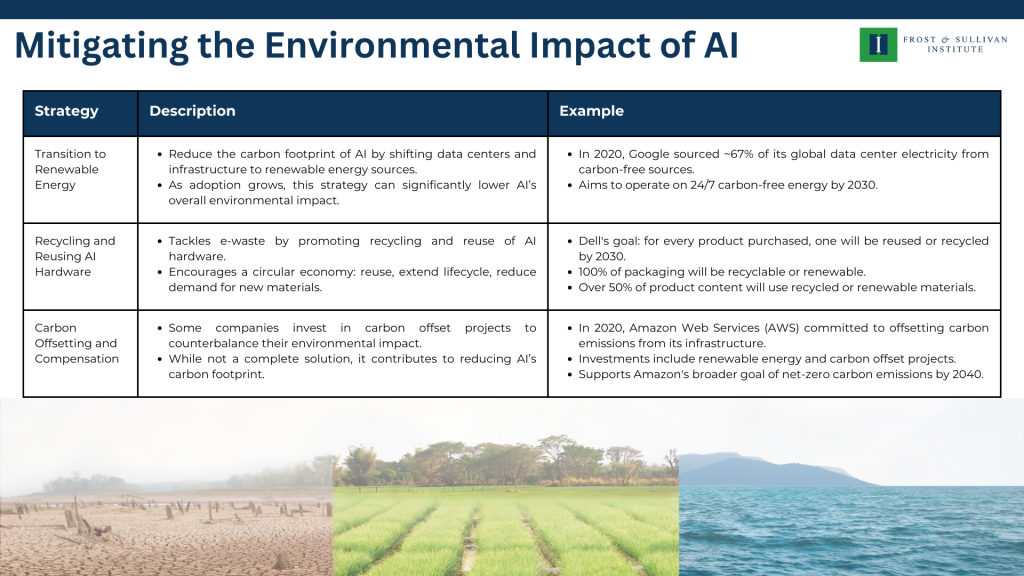
08 Apr AI for the Planet: How Artificial Intelligence is Affecting the Environment
Artificial Intelligence (AI) is often heralded as a transformative technology with the potential to revolutionize industries, enhance productivity, and solve complex global challenges. However, amidst its rise, there’s a growing concern about AI’s environmental impact—an aspect of the technology that is too often overlooked. While AI promises advancements in fields like healthcare, education, and climate science, the energy consumption required to train AI models, alongside the e-waste generated from the production of AI hardware, is taking a significant toll on the planet.
Excessive Energy Consumption
At its core, AI systems rely heavily on data and computational power, and advanced computers that perform complex tasks require more energy. Large amounts of computational power are needed to create sophisticated models like large language models (LLMs) or deep learning algorithms, often requiring high-end processors and data centers to process the data. These data centers are not only vast in scale but also require a significant amount of electricity to operate. This demand for energy translates into a larger carbon footprint, especially when the electricity is sourced from non-renewable resources like coal or natural gas.
When OpenAI trained GPT-3, a model that processes and generates text, the project produced around 500 tons of carbon dioxide, which is around 100 times more than what the typical passenger vehicle emits a year, and GPT-3 is only one AI model.

Source: Statista 2025
According to the chart above, the average energy consumption of a ChatGPT request was estimated at 2.9 watt-hours, nearly 10 times that of a regular Google search, which reportedly consumes 0.3 Wh per request.
With the size and complexity of AI models continuously increasing, the environmental impact is poised to grow unless steps are taken to mitigate it. AI models are not one-off creations. Researchers and companies frequently re-train models for various applications, leading to repeated energy consumption. As an increasing number of AI projects become central to both business and scientific discovery, the demand for energy-intensive computing resources only escalates.
E-Waste and The Hidden Cost of AI Hardware
As new technologies develop, the old ones are often thrown out, and AI is no exception. With such rapid growth, the turnover of AI hardware is faster than ever. The rapid pace of innovation in AI has led to a constant demand for new hardware graphics processing units (GPUs), application-specific integrated circuits (ASICs), and other specialized chips. These hardware advancements enable better performance and more sophisticated AI applications, but they also contribute to an increase in electronic waste (e-waste). The average lifespan of AI hardware is relatively short, with chips and devices becoming outdated as new, more efficient models are introduced. This creates a cycle where older hardware is disposed of, often in landfills, adding to the growing problem of e-waste.
E-waste has been a growing issue since the first outdated computers were tossed into landfills. In 2019, the world generated 53.6 million metric tons of e-waste, an average of 7.3 kg per capita, and such waste is predicted to reach nearly 75 million metric tons by 2030. A significant portion of this e-waste is made up of discarded electronics like servers, computers, and GPUs used in AI applications. The disposal of these electronics leads to the release of toxic chemicals such as lead, mercury, and cadmium, which can leach into the environment and contaminate both soil and water.
Mitigating the Environmental Impact of AI
While the environmental challenges posed by AI are significant, some steps can be taken to mitigate the impact and ensure that technology contributes to a sustainable future.

Conclusion
While AI holds immense potential to drive innovation and solve some of the world’s most pressing challenges, it is crucial to recognize and address the environmental costs associated with its development. By shifting toward renewable energy, recycling hardware, and compensating for the damage caused, we can reduce the environmental impact of this transformative technology. The promise of AI is too great to ignore, but it must be harnessed responsibly to ensure that it does not come at the expense of the planet’s future. As technology continues to evolve, sustainability must remain at the forefront of AI’s development, helping to safeguard both technological progress and the health of the planet.
Blog by Shreya Ghimire,
Research Analyst, Frost & Sullivan Institute
